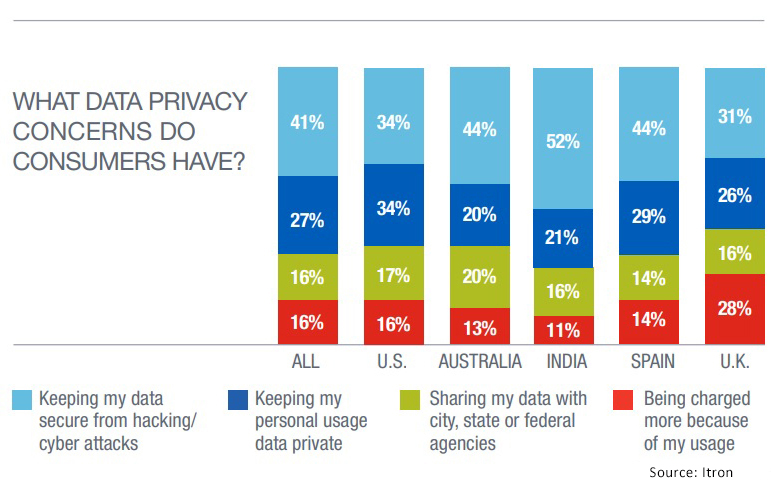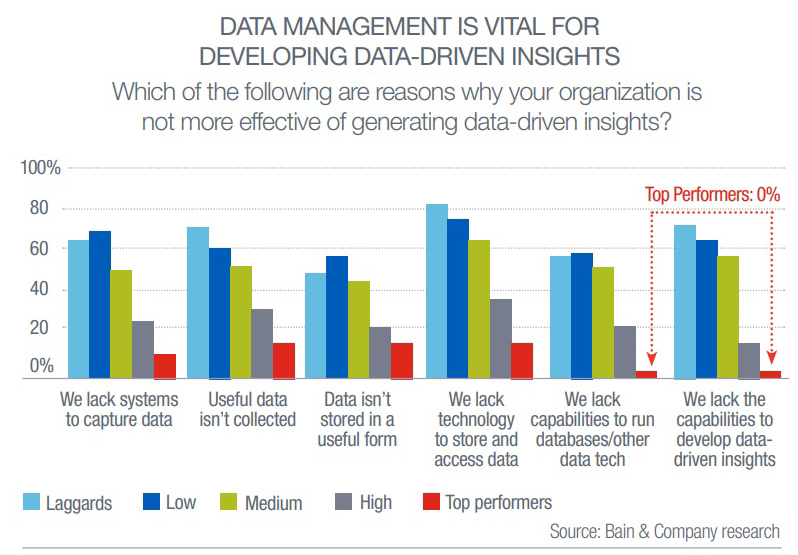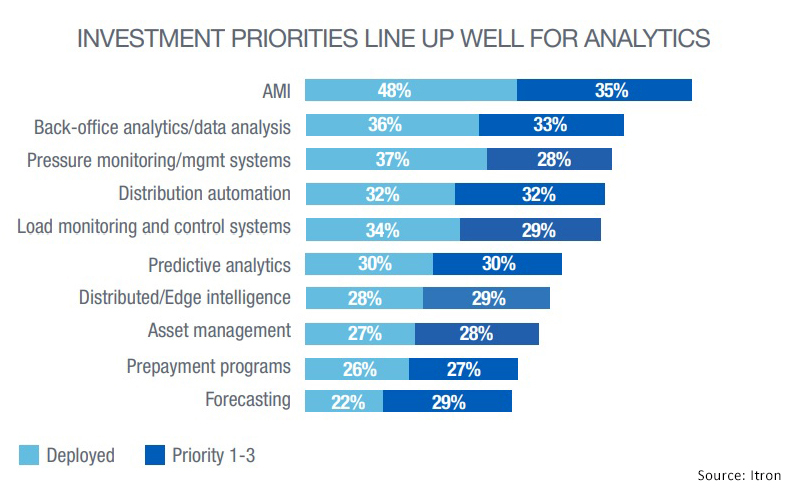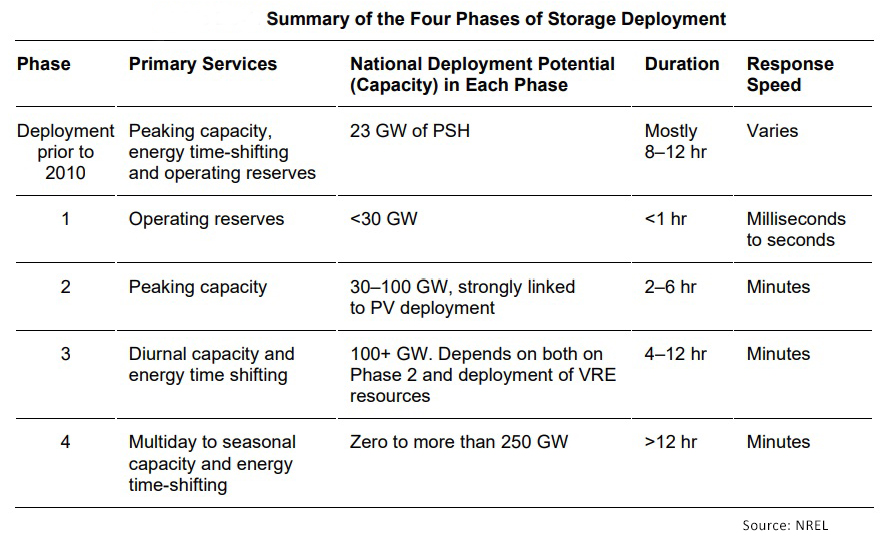How can emerging technologies support a clean-energy future?
Today’s energy industry is more dynamic than ever. The electrification of sectors like transportation is playing an important role in mitigating climate change, but its impact on the reliability of the grid cannot be overstated. From electric vehicles and fleets to electric trains and planes, the electrification of transportation is creating unprecedented energy demands. This is true now, and it will become even more true as demand rises, with nearly 234 million EV (electric-vehicle) units expected by 2027. Managing the grid in a sustainable way will continue to be a key challenge for those operating in the utility space.
Today’s power grids weren’t designed for the challenges they face today—from EVs to renewable energy, climate change, and urbanization—and the grid needs to be futureproofed. To do this, the sector needs to leverage technology to improve and reimagine energy storage and distribution. Energy storage will be essential for the transition to a decarbonized economy based on renewable energy sources, and energy distribution needs to be smarter and more resilient. Just how will emerging technologies support this transition and create a smarter, more resilient grid that can help usher in a clean-energy future?

Emerging Technologies Support Future Grids
Stefan Zschiegner, vice president of product management at Itron, says the most seminal transition facing the energy space is the electrification of transportation, but the biggest impact will hit after 2035. “When looking at most utilities’ long-range plans, the bulk power system provides sufficient generation to support the new loads,” he says. “Some estimates suggest that despite all the new EVs coming online and the electrification of transportation proliferating quickly, the increase in bulk load by 2035 is about 5-7% in the U.S., thus power generation and transmission for the most part will be impacted after 2035. The issues emerging today are local, in fact hyper local, and present today.”
Daniel Bresette, executive director of the EESI (Environmental and Energy Study Institute), says the proliferation of EVs in the next several years will prompt new technologies. “If electric vehicles are adopted as quickly as many industry watchers expect, more and more of us will have big rolling batteries in our garages and driveways over the coming decade or two. And that transition will unlock a whole new set of technologies and routines that could become indispensable in our daily lives in short order,” Bresette says. “For example, the ability to charge an electric vehicle at home will mean new charger installations and accommodations for drivers who live in multifamily buildings, as well as mindfulness about when we are charging to prevent overloading the grid. Part of the potential impact of these technologies will depend on our ability to ensure their deployment is affordable, accessible, and equitable.”
Another trend and emerging technology in the energy space is low and distribution-voltage network control. Zschiegner says it changes everything. “This network encompasses the part of the power grid that connects the distribution transformer to the meter at the home or business—and now even beyond, behind the meter,” he explains. “When it comes to managing today’s emerging energy use cases, the low-voltage network is the future. What was once a one-dimensional transfer of power between generation to end user is becoming a reciprocal, two-way grid capable of delivering advanced, predictive insights.”
In leveraging the power of DI (distributed intelligence), which features continuous insights, analytics, and control, utility companies can redefine what is possible with low-voltage network management. “These actionable insights give utilities realtime visibility across the network, supporting grid reliability, lowering operating costs, extending the life of current grid assets, and increasing customer engagement,” Zschiegner adds. “Over the next 10 years, (Itron) customers tell us the low-voltage distribution network is the focus area and edge compute with distributed intelligence is the only way to support DERs (distributed energy resources) and EVs in a safe and sustainable way.”
EESI’s Bresette also describes the future of the electric grid as a two-way street that moves in two directions, relying on energy efficiency, DERs like solar installations, and battery storage, EVs, and smart controls. “In other words, (it’ll be) a big system of connected, distributed, smaller systems that can communicate and deploy resources as necessary to meet demand,” he says. “There are resilience benefits to this as well, as more and more distributed energy resources contribute to the grid and help keep the overall system balanced and better able to safely withstand stresses and strains put upon it.”
Innovations in Energy Storage and Distribution
Cosma Panzacchi, head of corporate strategy and sustainability for Siemens Energy, says the electrical grid needs to be able to handle the pressures of tomorrow, which will include, among other things, a phase-out of coal and the further development of H₂-capable gas power plants, the expansion of renewables, maintaining grid stability, storage solutions that step in when the wind isn’t blowing and the sun isn’t shining, as well as the extension and modernization of grids. “Together, these steps and technologies can ensure energy security and make a decarbonized energy system possible,” he says.

Energy storage will be essential for the transition to a decarbonized economy based on renewable energy sources. “As electricity generated by wind or solar energy is not always available in the quantities needed, we will need to store more,” Panzacchi explains. “For this, we need several storage solutions. Today, battery storage is being used as an efficient method of supplying power when needed. They are being used for ensuring grid stability, to perform ‘black starts’ if needed, and to support frequency regulation. And when we combine renewables, such as wind farms, with battery storage, we can successfully manage power depending on current needs.”
Allison Mahvi, assistant professor of the Solar Energy Laboratory at the University of Wisconsin-Madison, says energy storage is important because it will allow the use of intermittent energy sources like solar and wind to power transportation, building, and industrial systems. “Storage will almost certainly need to be in the mix in some capacity to meet the U.S.’s 2050 climate goals,” she says. “Right now, our grid is set up so that the amount of energy generated is always equal to the demand. With intermittent sources or even base load nuclear, we need to break that constraint to enable carbon-free electricity generation.”
Innovation in energy-storage technology is also critical from a financial standpoint. Itron’s Zschiegner says in 2021, the U.S. Dept. of Energy put the total annual cost of grid failures between $28 billion and $169 billion. He believes the future of energy storage lies in combining DI—which leverages an industrial IoT (Internet of Things) network, smart grid sensors, and edge computing—with realtime analytics that provide continuous data to improve energy distribution efficiency. “These intelligent solutions give insight into the least visible part of the distribution system in a cost-effective way, providing visibility both in front of and behind the meter,” Zschiegner explains. “What was once only possible with expensive, point solutions can now be achieved by layering on new use cases to already-established AMI (advanced metering infrastructure) system investments.”

By mid-century, Siemens Energy envisions the wide use of different energy storage technologies. Panzacchi says batteries will be used for short-term storage of electricity, combinations of thermal and mechanical storage solutions will provide industrial heat and electricity for mid-term storage, and electrolyzers will turn excess power from renewables into green hydrogen that can be stored long term and turned into electricity or transferred to other sectors of the economy as needed.
Paul Wiener, senior vice president of strategic marketing for GaN Systems, believes the key to cracking the energy-storage code for renewables is a shift away from silicon and toward GaN technology. “Hardware manufacturers must shift from silicon to wide bandgap power semiconductors,” Wiener says. “This means implementing GaN into the solar inverters and battery energy storage systems for residential and commercial applications. For utility company power levels, voltages at 1500V and higher, silicon carbide is the option.”
Meanwhile, as energy-storage technologies advance and evolve to meet the needs of tomorrow’s grids, Jeni Panhorst, vice president and general manager for the Network and Edge Platforms Division at Intel, says distribution systems must advance and evolve too. Today’s energy-distribution systems, she says, are traditional hub and spoke in that mass power is generated at a single source, in this case a power station, that can be either coal, gas, nuclear, hydro, solar, or wind. That energy is then distributed through a high-voltage grid before being converted to low-voltage at the consumer end using substations.
“In the future, while we’ll continue to have the large-scale energy system, we will see an increase in power generated at the edge of the network through micro power stations, solar, wind, and all forms of renewables,” Panhorst says. “These will be complemented with battery technologies to store for use when needed. To implement this change requires a new grid distribution and operational system for the major utility companies.”
3 Trends Impacting the Energy Value Chain
Jeni Panhorst of Intel, lists three trends impacting the energy value chain and the impact they’re having.
- Renewables: Renewables are evolving. These advancements are important to accelerating the availability of renewable/green energy and minimizing carbon emissions within the target timeframes. Technology around renewables is becoming more efficient in terms of solar panels, wind farms, heat pumps, safer nuclear, and smaller more compact waves, among others. Availability across the whole value chain—from large utilities to business and consumers—is critical, and this can enable self-generation and provide additional energy back to the grid when surplus is generated.
- Battery Technology: This is a large innovation opportunity. Initially driven by the expanded use of EVs, battery technology is now expanding into the world of energy storage within the major grid or even at the consumption end for consumers, enabling us to store renewable energy for when we need it. Currently, this technology is still relatively expensive and is dependent on extracting minerals such as lithium. However, I expect this to change and become more cost-effective as the technology becomes more efficient over time.
- Digitization/Modernization: Transformation of the energy sector through virtualization will require robust, scalable, and reliable communications infrastructure to enable monitoring and control leveraging the power of 5G. For instance, AI (artificial intelligence) can enable energy systems to make intelligent decisions about where, how, and when they consume power in realtime. Edge compute platforms can extract, store, and utilize data at scale, supported by AI accelerators and automated processes, to schedule, manage, and automate the use of renewable energy.
Oliver Schmidt, researcher and head of the Storage Lab, a research hub for electrical energy storage at the Imperial College London, says essentially what is currently a dumb distribution system needs to become smart. “The distribution network … has been dumb in the past—i.e., the operator only knew how much power is consumed at particular nodes from the sum of all consumers behind,” he says. “In future, the distribution will become more challenging, because electrification of heat and transport means there will be many more consumers (and) consumers will also become producers (via residential photovoltaics).”
Therefore, the distribution network needs to become smart. “Measurement and communication technology needs to be deployed so the network operator knows what is going on on a more granular level in order to ensure system stability amongst these challenges,” Schmidt adds. “Given the higher volatility of energy generation due to solar PV (photovoltaics) and wind, distribution networks will also feature larger energy storage systems to ensure local supply at all times.”
So how can we ensure a cost-efficient transformation of the energy sector, and, in particular, of distribution networks? “The energy distribution market is highly regulated with distribution network operators earning regulated revenues based on the costs of the assets they deploy, (such as) power lines and batteries,” Schmidt says. “The regulator should find ways to incentivize distribution network operators where possible to ensure most cost-efficient solutions to the challenges mentioned above—i.e., instead of deploying an expensive power line, rather deploy a cheaper battery if it can maximize utilization of the existing power line.”

A complete transformation of the energy sector may seem like a head-in-the-clouds-type of goal, but Siemens Energy’s Panzacchi says the stakes are high, and sustainable energy is a critical driver for growth and prosperity worldwide. “Without massive expansion of renewable energies and the energy system in total, the two-degree target for limiting global warming will not be achievable,” he stresses. “High social and economic costs, such as rising sea levels and prolonged droughts, would be the consequence in many sensitive regions of the world. New energy systems offer developing countries and rural areas the opportunity to create access to electricity and economic participation through a decentralized power supply.”
After all, Panzacchi concludes, temperatures will not stop rising in Berlin or Washington if emissions in New Delhi don’t fall. The effort to futureproof the power grid represents a tough challenge, but the costs of not doing so are too high. Emerging technologies in energy storage and smarter, more efficient energy distribution can help get the sector through this transition, leading to a more sustainable future that relies on renewables and energy-efficient technologies to power life and business.
Links for Further Learning:
- Itron’s 2022 Resourcefulness Report
- 2021 Infrastructure Report Card—Energy
- The Sustainable Network and Edge: Building the Foundation for the Future, Today
- Storage Futures Study from NREL
Want to tweet about this article? Use hashtags #IoT #sustainability #AI #5G #cloud #edge #digitaltransformation #machinelearning #infrastructure #climatechange #energy #renewables #energystorage #energydistribution #smartgrid #powergrid #EVs #transportation #cleanenergy #Itron #EESI #Intel #SiemensEnergy #GaNSystems


